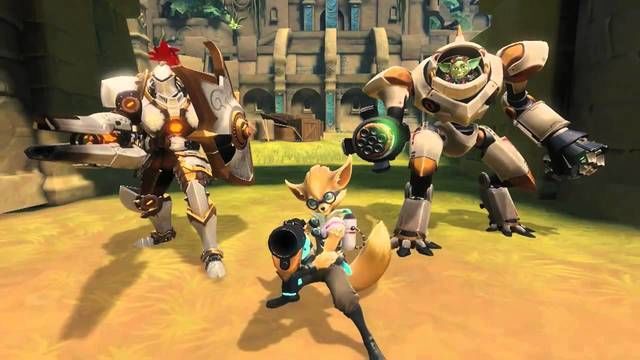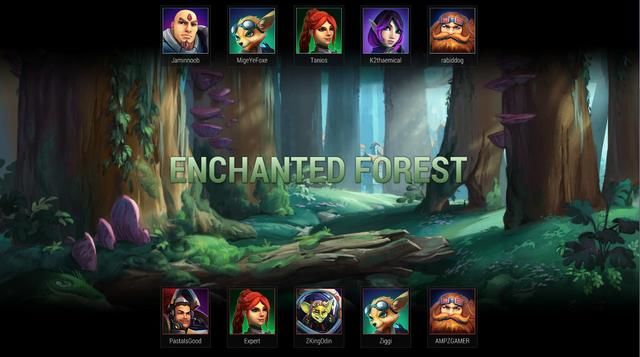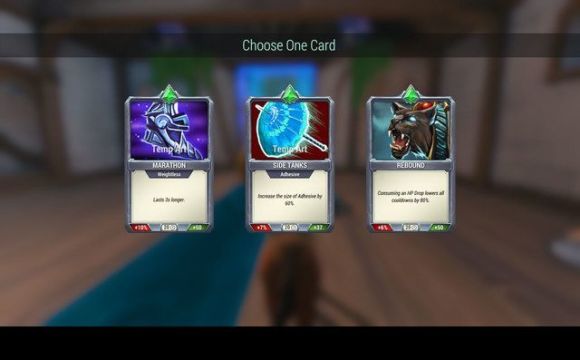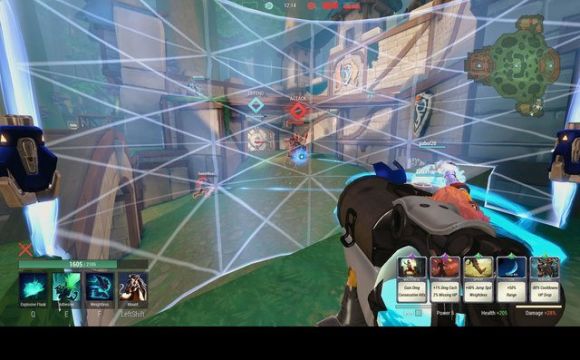The game is extremely raw, and lacks a lot of the promised features that it will theoretically launch with, but the core gameplay is well fleshed out, and gives a tantalizing glimpse into things to come.
Original Concept or Overwatch Clone?
At first glance, a fairly obvious comparison presents itself – Paladins looks and feels an awful lot like Blizzard’s new action shooter, Overwatch, down to some almost plagiaristic character designs. There’s a dwarf who throws turrets, a tank with a shield, and a bouncing, grenade-launching rodent, all of which bear more than a little resemblance to similar characters from Overwatch.
The core of the action is similar too – the combat is fast-paced, cartoonish, and somewhat less skill-based than a hardcore FPS like Counter-Strike. A cynical person might be inclined to say that Paladins is an attempt to cash in on the Overwatch hype.
To be clear, there is definitely some of that going on, but Paladins is different enough to be unique, and appears to be aiming at a different segment of the market that Overwatch is (or at least a tangential one). There are some compelling differences that make this title worth considering on its own merits, rather than in competition with Blizzard’s upcoming powerhouse.
A First Person Mobile Online Battle Arena
As soon as you actually end up in a game, the differences between Paladins and other shooters becomes immediately clear – yes, your skills and aiming ability are important, but there are also some significant RPG elements. Each character has a “deck” which they can use to customize their abilities, leading to multiple potential builds that will affect the way you play your character.
For example, Ruckus, a mech-piloting goblin, can focus on building for raw DPS, picking up skills that let him hover in mid-air and dish out sustained machine-gun fire, but he also has an equally viable build that focuses on sustain and lifesteal, letting him stand on capture points and go toe-to-toe with tanks or bully weaker characters away from objectives.
The objectives themselves reveal what Paladins actually is – more of a First-Person MOBA than a full-fledged FPS. The central gameplay element involves holding a point until it spawns a siege engine, which you then escort to the enemy base with the goal of breaking down two tiers of walls and destroying their vault (this is the primary game mode, though Hi-Rez is testing two other modes, one of which involves simply capturing points and one that involves just escorting the siege engines).
The action is fast, fun, and engaging, with respawning fast and comebacks frequent, though balance will still need tweaking to prevent stalemates and stomps, which do happen. Matches last anywhere from five to fifteen minutes, making them shorter than most MOBA games but longer than a CS: GO match.
Card Collecting for Fun and Profit
Since Paladins is free-to-play, the question of whether or not it will be pay-to-win inevitably comes up, and it seems like Hi-Rez is doing a good job of allaying those fears. It is entirely possible to assemble a full deck of cards for all your characters without spending a penny (though it will go much faster and be much less painful if you spend some cash), and it appears that the only unique paid features will be cosmetics, like skins or custom mounts.
All characters are viable from player level one (though some work better with more cards than others), and player ability still matters a lot, so new players with FPS experience aren’t likely to get frustrated before they can build a good card collection.
Currently, it takes an awful lot of playtime to acquire all of the cards, so Hi-Rez may need to tweak the rate of card acquisition or the size of decks, but the system right now is fair and entertaining, especially if you’re an achievement or reward-based gamer.
Worth Keeping an Eye On
Paladins may seem samey to some, but Hi-Rez has demonstrated with Smite that they’re able to take a fairly broad game concept and add enough uniqueness to keep players interested and compete in a crowded market. What’s more, Paladins has enough going for it that’s entirely unique, even at this early stage, that it warrants consideration completely apart from Overwatch and other games in its emerging genre.
Let’s be clear, though – the game needs a lot of work. There are lots of bugs, and much of it feels raw – characters still lack an alt-fire, many of them are short on cards that would make certain builds viable, and some characters are broken (both in the “not working sense” and the “imbalanced sense”).
Still, Paladins is filling a relatively empty niche and has an experienced game studio behind it, so it’s worth keeping an eye on or picking up a beta key for, especially if you’re balking at Overwatch’s price tag or release date.




